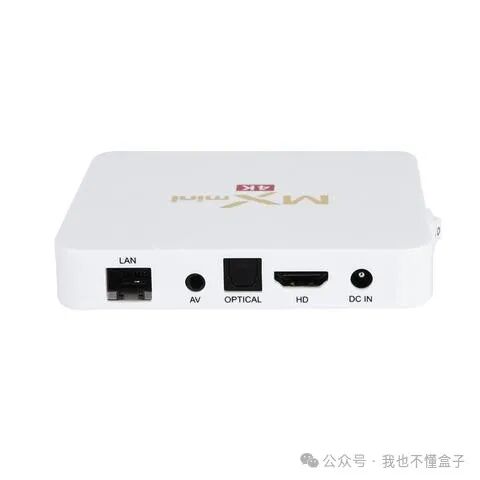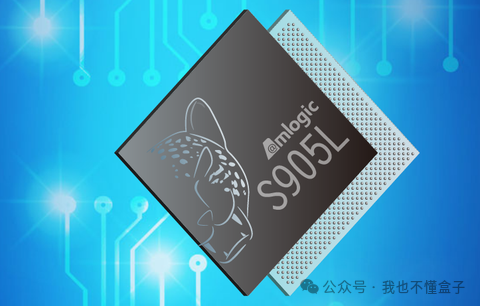 Click ↑BlueWords to Follow
Click ↑BlueWords to Follow
A. Technical Positioning and Market Status of Amlogic Control Chips
Amlogic is a global leader in waferless semiconductor design, focusing on the development of SoC chips for smart terminals. Its products cover various fields such as smart set-top boxes, smart TVs, and in-car entertainment systems, particularly dominating the set-top box market. According to a report by Dongfang Securities, Amlogic’s T series and S series chips are widely adopted by mainstream manufacturers such as Xiaomi, Hisense, and TCL, with T series sales revenue increasing by 70% year-on-year in the first half of 2024. Its technical advantages are mainly reflected in:
1. Advanced process technology: Gradually upgrading from 28nm to 12nm and 6nm, improving performance while reducing power consumption by 46%.
2. Full-format decoding capability: Supporting mainstream encoding formats such as AV1, H.265, and VP9, covering 4K/8K ultra-high-definition needs.
3. AI integration: Self-developed NPU unit achieving 3.2 TOPS computing power, promoting the implementation of edge AI applications.

B. Core Performance Requirements of Amlogic Set-Top Box Control Chips
1. Processing capability: Collaborative optimization of CPU and GPU
• CPU architecture upgrade:
The CPU of Amlogic chips has gradually evolved from the early Cortex-A9 (such as AML8726-M3) to a mixed architecture of A76/A55 (such as S928X). Taking the flagship model S928X as an example, it adopts a “1×A76 + 4×A55” five-core design, balancing high performance and energy efficiency, with single-core performance improved by over 60% compared to A53. Compared to the S905 series (A53 quad-core) and S922X (A73+A53 hexa-core), the A76 core of S928X significantly enhances the ability to handle complex tasks, such as multi-threaded video stream processing and AI inference.
• GPU graphics rendering capability:
The graphics processing unit has been upgraded from Mali-400 to Mali-G57/G52, supporting 4K GUI rendering and dynamic compensation technology (MEMC). For example, S928X is equipped with Mali-G57 MC2, supporting 10-bit color depth and HDR10+, achieving smoother picture transitions. In contrast, the Mali-G31 of S905X3 focuses on low-power scenarios, suitable for mid-range models.
2. Video decoding and image quality enhancement technology
• Resolution and frame rate:
8K@60fps decoding has become a standard feature for high-end chips. S928X supports AV1/H.265 hardware decoding at a resolution of 7680×4320 and integrates AI super-resolution (AI-SR) technology, which can real-time enhance low-resolution content to 8K quality. Mid-range chips like S905L2 (CM201-1 set-top box) focus on 4K@60fps, meeting mainstream market demands.
• Dynamic range and color management:
Supports standards such as Dolby Vision and HDR Vivid, achieving local contrast optimization through a self-developed image quality engine. For instance, the 3D LUT color technology of S928X can restore 1.07 billion colors, covering 98% of the DCI-P3 color gamut.
3. AI function integration and computing power requirements
• NPU performance indicators:
Amlogic’s self-developed NPU has increased from 1T computing power (such as S905X5) to 3.2T (S928X), supporting voice recognition, image super-resolution, and smart home control. For example, the Xiaomi Box 4, by integrating the S905 series chips, has achieved far-field voice interaction and linkage with Mijia devices.
• Edge AI application scenarios:
Including real-time subtitle generation, ambient light adaptation, and user behavior analysis. Dongfang Securities pointed out that Amlogic’s 6nm chip has achieved multi-sensor fusion, and will expand into the field of machine vision in the future.
4. Connectivity and expansion interfaces
• HDMI 2.1 and display technology:
Fully functional HDMI 2.1a supports VRR (Variable Refresh Rate) and ALLM (Auto Low Latency Mode), ensuring smoothness in gaming and video scenarios. S928X also integrates DSC 1.2 compression technology, allowing 8K signal transmission under bandwidth constraints.
• Wireless connectivity standards:
Transitioning from Wi-Fi 5 to Wi-Fi 6, and integrating Bluetooth 5.0/5.2. For example, the CM201-1 set-top box supports dual-band Wi-Fi and Bluetooth 4.4, meeting multi-device interconnection needs.
5. Energy efficiency and thermal design
• Process optimization:
The 6nm process reduces the power consumption of S928X by 50% compared to 12nm chips, while performance increases by 60%. Compared to the 28nm process of AML8726-MX (advertising machine motherboard), the energy efficiency ratio has significantly improved.
• Dynamic frequency adjustment technology:
Automatically adjusts CPU/GPU frequency based on load; for example, S905X3 can reduce power consumption to below 1W during standby.

C. Application Scenarios and Future Technology Trends
1. Ultra-high-definition and immersive experience
• 8K ecosystem development:
With the 8K broadcasts of the Tokyo Olympics and Beijing Winter Olympics, chips like Amlogic S928X are promoting the popularization of terminal devices, requiring compatibility with domestic encoding standards such as AVS3.
• Cloud gaming and VR integration:
The Vulkan API support of Mali-G57 provides a hardware foundation for cloud rendering, and may integrate ray tracing units in the future.
2. Smart home hub
• Voice and visual interaction:
The Xiaomi Box 4 has achieved voice control of home appliances, and the next generation of chips may integrate UWB (Ultra-Wideband) technology to enhance positioning accuracy.
3. In-car and multi-screen collaboration
• Smart cockpit expansion:
Amlogic’s in-car chips support multi-screen display and 360° panoramic imaging, and may integrate ADAS (Advanced Driver Assistance Systems) functions in the future.
D. Challenges and Response Strategies
1. Balancing heat dissipation and cost: High-performance chips require active cooling designs, increasing hardware costs. Solutions include optimizing packaging processes (such as SiP).
2. Content security protection: Integration of DRM (Digital Rights Management) hardware-level encryption is necessary to support standards like ChinaDRM.
3. Ecological fragmentation: Customized development for different regions (such as AVS3 support for the domestic market, AV1 adaptation for overseas).
Conclusion
The performance requirements of Amlogic control chips are evolving towards three dimensions: “ultra-high-definition decoding, AI generalization, and low-latency connectivity.” In the future, with the introduction of 6nm/5nm processes and adaptation to domestic systems like OpenHarmony, Amlogic is expected to further consolidate its leading position in the smart terminal chip market.
PS. In the era of fragmentation, it is not easy to stick to originality. Please give us a thumbs up【like】 + 【look】 at the end of the article; your support is the motivation for continued creation!